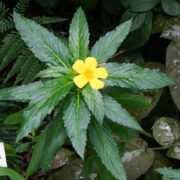Chickweed
(Stellaria media)
Ahhh, Chickweed. It’s such a refreshing sight this time of year. Its clumping, succulent carpets of bright green scream fresh new life after winter. It might be my favorite wild edible plant, partly because of its abundant accessibility, and partly because my body is so excited for a bite of fresh wild green nourishment this time of year. You can experience the full vitality of eating fresh greens by getting on your hands and knees, and taking a bite directly from the earth as if you were a rabbit:) It’s such a different sensation than eating even the freshest greens from the grocery store or farmers market. And this is what I unabashedly do when I first encounter this plant each year. I bow down and give thanks for this delicious & welcome gift.
Tastes/Energetics: cooling & moistening
Parts Used: aerial parts
Actions: nutritive, antiscorbutic, anti-pyretic, demulcent, emollient, vulnerary, pectoral, diuretic
Uses: Chickweed is primarily used either internally as a nutritive herb with cooling and detoxifying properties, or externally as a soothing remedy for cuts, itching, or irritation. Chickweed contains saponins, soap-like plant chemicals that emulsify and increase permeability of cellular membranes, thus, increasing the absorption of nutrients, promoting the excretion of metabolic waste, dissolving phlegm, neutralizing toxins, and even weakening bacterial cell walls, rendering them more vulnerable. Chickweed also has a reputation for dissolving cysts, especially ovarian cysts, and some wise country women say it helps with weight loss (soap dissolves fat). Chickweed is very soothing to the bladder & kidneys and is used as a cooling diuretic for cystitis.
Indications: signs of heat (fever, infection, coughs with yellow, concentrated mucus, inflammations, any condition ending with “itis”), chronic UTIs, internal or external wounds (to draw out splinters or infection, reduce swelling & inflammation), rashes (including chickenpox, measels, diaper rash, bug bites, or poison ivy), pink eye (as a wash), internally to support weight loss or dissolution of cysts.
Preparations: Internally as a tea, tincture, or fresh plant. Externally as a poultice, salve, or wash.
Cautions: None cited in literature.
2 cups chickweed
2 cloves garlic
1/4 cup olive oil
I TBSP lemon juice
optional:
3-4 oz hard cheese
3-4 oz nuts or seedsPlace chickweed, nuts & garlic in a food processor and blend until finely minced. Add the cheese, oil & lemon juice and process until blended. Transfer to a small bowl or tupperware & store in the refrigerator.Identification: Chickweed is out now, thanks to the warm weather & rain. You can often even find it growing under the snow. If you wish to harvest, remember to find a place away from the roadside & chemical sprays, and to harvest no more than 1/3 of what you find. I highly recommend that you get a field guide to help you with identification. It can be difficult early in the season, before the plant is in bloom. Here are some hints:The leaves of chickweed are small, ovate, oppositely arranged, and a little fuzzy. The leaves and stems have an almost succulent quality. This becomes more apparent as the plant matures. The stems are a little hairy, and if you look closely at the nodes, you’ll notice that these hairs change direction around each node. The flowers are also tiny and white in color. They appear to have 10 petals, when in reality they are 5 petals, each one deeply cut into 2 lobes. Happy Hunting!


